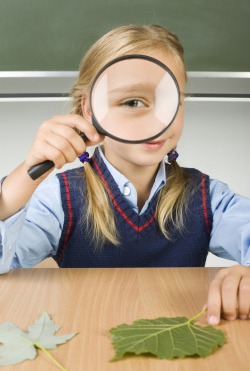California State Standards

You may being asking why it is important that your child do this project and if the California State Standards for first grade are being covered. Studies show that we retain information better when we do something with it. Having my students do a project, allows them to know that the information that they are learning will not only be something that they need to remember but, it is also something that they can use in their lives. This will give my students the advantage of retaining and being able to use the information they gain in their lives beyond the day that they learn it. I have listed, below, the California State Standards for first grade that the students will be covering by doing this project. Please feel free to contact me with any questions, comments, or concerns you have about this project at any time.
The First Grade California State Standards That Are Covered In This Project
Grade 1
Science
Earth Sciences
A Child's Place in Time and Space
Listening and Speaking
Reading
Visual Arts
Science
Earth Sciences
- 3.0 Weather can be observed, measured, and described. As a basis for understanding this concept.
- 3.b Students know that the weather changes from day to day but that trends in temperature or of rain (or snow) tend to be predictable during a season.
Investigation and Experimentation - 4.0 Scientific progress is made by asking meaningful questions and conducting careful investigations. As a basis for understanding this concept and addressing the content in the other three strands, students should develop their own questions and perform investigations.
- 4.b Record observations and data with pictures, numbers, or written statements.
Life Sciences - 2.0 Plants and animals meet their needs in different ways. As a basis for understanding this concept.
- 2.a Students know different plants and animals inhabit different kinds of environments and have external features that help them thrive in different kinds of places.
A Child's Place in Time and Space
- 2.0 Students compare and contrast the absolute and relative locations of places and people and describe the physical and/ or human characteristics of places.
- 2.1 Locate on maps and globes their local community, California, the United States, the seven continents, and the four oceans.
- 2.4 Describe how location, weather, and physical environment affect the way people live, including the effects on their food, clothing, shelter, transportation, and recreation.
Listening and Speaking
- 1.0 Listening and Speaking Strategies.
- 1.1 Listen attentively.
- 1.2 Ask questions for clarification and understanding.
- 1.4 Stay on the topic when speaking.
- 1.5 Use descriptive words when speaking about people, places, things, and events.
Reading
- 2.0 Reading Comprehension.
- 2.2 Respond to and questions.
- 2.6 Relate prior knowledge to textual information.
- 2.7 Retell the central ideas of simple expository or narrative passages.
- 1.0 Writing Strategies.
- 1.1 Select a focus when writing.
- 1.2 Use descriptive words when writing.
- 1.3 Print legibly and space letters, words, and sentences appropriately.
- 2.0 Writing Applications (Genres and Their Characteristics).
- 2.2 Write brief expository descriptions of a real object, person, place, or event, using sensory details.
- 1.0 Written and Oral English Language Conventions.
- 1.1 Write and speak in complete, coherent sentences.
- 1.5 Use a period, exclamation point, or question mark at the end of sentences.
- 1.6 Use knowledge of the basic rules of punctuation and capitalization when writing.
- 1.7 Capitalize the first word of a sentence, names of people, and the pronoun
- 1.8 Spell three-and four-letter short-vowel words and grade-level-appropriate sight words correctly.
Visual Arts
- 1.0 ARTISTIC PERCEPTION
- 1.1 Describe and replicate repeated patterns in nature, in the environment, and in works of art.
- 1.3 Identify the elements of art in objects in nature, in the environment, and in works of art,
- 2.0 CREATIVE EXPRESSION
- 4.0 AESTHETIC VALUING
- 4.3 Describe how and why they made a selected work of art, focusing on the media and technique.
- 4.4 Select something they like about their work of art and something they would change.
National Educational Technology Standards for Students (NETS) - 1.0 Creativity and Innovation Students demonstrate creative thinking, construct knowledge, and develop innovative products and processes using technology.
- 1.b Students create original works as a means of personal or group expression.
- 2.0 Communication and Collaboration Students use digital media and environments to communicate and work collaboratively, including at a distance, to support individual learning and contribute to the learning of others.
- 2.a Students interact, collaborate, and publish with peers, experts, or others employing a variety of digital environments and media.
- 2.b Students communicate information and ideas effectively to multiple audiences using a variety of media and formats.
- 3.0 Research and Information Fluency Students apply digital tools to gather, evaluate, and use information.
- 3.b Students locate, organize, analyze, evaluate, synthesize, and ethically use information from a variety of sources and media.
- 3.d Students process data and report results.
- 4.0 Critical Thinking, Problem Solving, and Decision Making Students use critical thinking skills to plan and conduct research, manage projects, solve problems, and make informed decisions using appropriate digital tools and resources.
- 4.b Students plan and manage activities to develop a solution or complete a project.
- 5.0 Digital Citizenship Students understand human, cultural, and societal issues related to technology and practice legal and ethical behavior.
- 5.c Students demonstrate personal responsibility for lifelong learning.
- 6.0 Technology Operations and Concepts Students demonstrate a sound understanding of technology concepts, systems, and operations.
- 6.a Students understand and use technology systems.
- 6.d Students transfer current knowledge to learning of new technologies.
